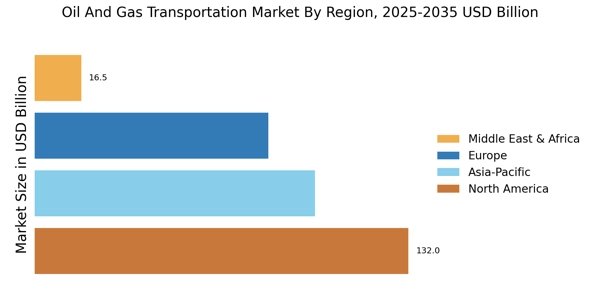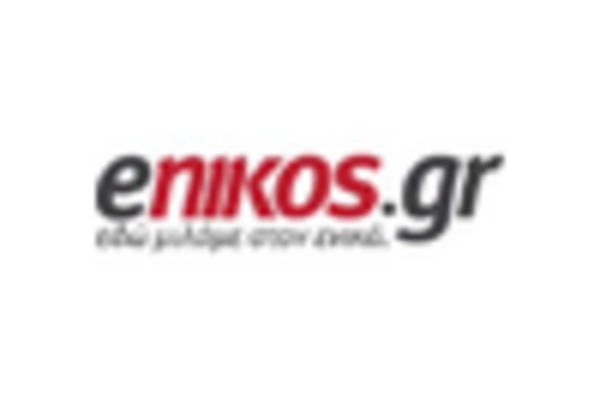Geopolitical Factors
Geopolitical factors are increasingly impacting the Oil And Gas Transportation Market, influencing supply chains and transportation routes. Political instability in oil-rich regions can disrupt supply, leading to fluctuations in prices and transportation costs. Additionally, trade policies and international relations play a crucial role in determining the feasibility of transportation routes. For instance, sanctions imposed on certain countries can limit access to vital resources, necessitating alternative transportation strategies. As geopolitical dynamics continue to evolve, companies within the Oil And Gas Transportation Market must remain agile, adapting their strategies to navigate these complexities and ensure uninterrupted service.
Regulatory Frameworks
The regulatory landscape significantly influences the Oil And Gas Transportation Market. Governments worldwide are implementing stringent regulations aimed at ensuring safety and environmental protection. Compliance with these regulations often necessitates investment in advanced technologies and practices. For example, the introduction of stricter emissions standards may compel companies to adopt cleaner transportation methods. This shift could lead to increased operational costs initially, but it may also open avenues for innovation within the Oil And Gas Transportation Market. Companies that proactively adapt to these regulations may gain a competitive edge, positioning themselves favorably in a market that increasingly values sustainability.
Increasing Energy Demand
The Oil And Gas Transportation Market is experiencing a surge in energy demand, driven by industrial growth and urbanization. As economies expand, the need for reliable energy sources intensifies, leading to increased transportation of oil and gas. According to recent data, global energy consumption is projected to rise by approximately 30% by 2040, necessitating enhanced transportation infrastructure. This demand is particularly pronounced in emerging markets, where rapid industrialization fuels the need for efficient logistics. Consequently, companies within the Oil And Gas Transportation Market are likely to invest in advanced transportation solutions to meet this growing demand, ensuring timely delivery and minimizing disruptions.
Infrastructure Development
Infrastructure development plays a pivotal role in shaping the Oil And Gas Transportation Market. Governments and private entities are increasingly investing in pipelines, ports, and terminals to facilitate the efficient movement of oil and gas. For instance, the construction of new pipelines is expected to enhance connectivity between production sites and consumption areas, thereby reducing transportation costs. Recent reports indicate that investments in oil and gas infrastructure could exceed 1 trillion dollars over the next decade. This influx of capital is likely to bolster the Oil And Gas Transportation Market, as improved infrastructure directly correlates with enhanced operational efficiency and reduced transit times.
Technological Advancements
Technological advancements are reshaping the Oil And Gas Transportation Market, offering innovative solutions to enhance efficiency and safety. The integration of automation, data analytics, and real-time monitoring systems is becoming commonplace. These technologies enable companies to optimize routes, reduce fuel consumption, and enhance safety protocols. For instance, the adoption of predictive maintenance technologies can minimize downtime and extend the lifespan of transportation assets. As these technologies evolve, they are likely to drive down operational costs and improve service reliability within the Oil And Gas Transportation Market, making it more attractive to investors and stakeholders.


















Leave a Comment